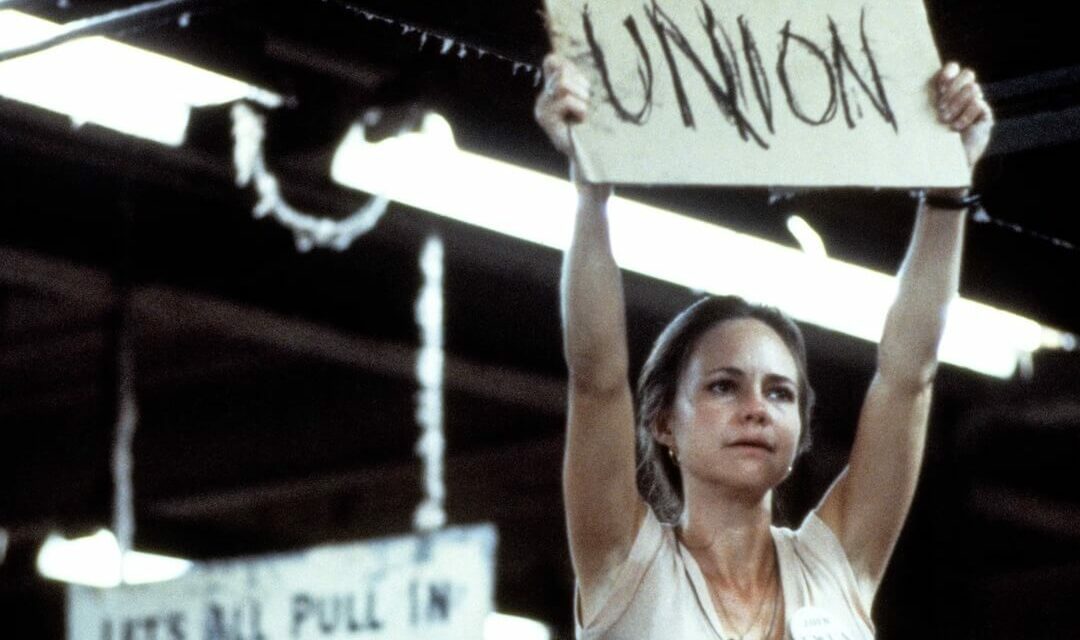Now, I haven’t seen footage of any VFX artists getting accidentally sucked out to the trash planet of Sakaar to fight in gladiator arenas as they’re touching up some environmental shots. I don’t think data wranglers are losing limbs to laser blasts as they change out camera equipment in a Mandalorian desert.
But in the VFX industry right now, there is a cohesive perception that working without representation is a serious problem. This problem – the working conditions for thousands of employees – is being confronted with a growing mountain of voices and hard data.
The last decade of VFX unionization and where it’s moving right now
Type in a search phrase for articles about “VFX unionization” today, and you might see that the last time VFX workers strongly pushed for unionization was way back in 2013. The Hollywood Reporter recently published an in-depth piece about it, and this previously stalled push for unionization in 2013 culminated with this moment:
Ang Lee’s Life of Pi won the “Best Visual Effects” award. As hundreds of VFX artists rallied and protested outside the Dolby Theatre, VFX Supervisor Bill Westenhofer stood up to receive the award. This was a few moments after presenter Robert Downey jr. said “It’s important that visual effects are given the respect they deserve.”
Westenhofer was able to speak for 42 seconds before the Oscars rapidly amplified the theme of Jaws and played him out.
In the years after, there was a push for unionization under the umbrella of the International Alliance of Theatrical Stage Employees, but the voices behind it didn’t have the unity or perhaps the leverage that they do now. The group coordinating in 2023 includes tightly organizing drivers like Mark Patch, a VFX veteran whose work includes Greyhound and Nope. The VFX artists and crews supporting these current unionizing efforts work on some of the most in-demand major studio productions, giving them heightened power to demand fair working structures.
The contrast between VFX artists and other facets of the entertainment industry is pronounced, like trying to compare a kitten and a grown lion by calling them both cats. This is especially apparent right now as just this week the Director’s Guild of America (DGA) and the Alliance of Motion Picture and Television Producers (AMPTP) have decided to negotiate new contract terms on May 10, 2023. Likewise, the Writer’s Guild of America – which may face a strike this year – is ready to begin contract negotiations on March 20th.

The 2023 IATSE survey emphasizes the challenges that VFX workers face and why they need unionization
The IATSE (International Alliance of Theatrical Stage Employees) launched a worker’s survey on November 10th, 2022 that accrued data from hundreds of VFX employees on different facets of their working conditions. The survey, now available in full at VFXunion.org, stated this:
While initially aimed at helping VFX workers advocate for themselves in negotiations by publicizing rate information that the producers who hire them are loath to share, the survey now additionally seeks to understand these workers’ shared challenges in building a sustainable career in VFX, as well as to highlight the stark contrast between the non-union VFX workers’ experiences and that of their unionized coworkers, who are often unaware that their colleagues are not offered the same benefits and protections as every other IATSE-represented craft on set.
Here are some of the key findings:
• 12% of VFX employees have carry-over health insurance from job to job. 43% of those surveyed don’t have any health insurance.
• 15% of those surveyed receive employer contributions to a retirement fund.
• 70% of workers stated that they are forced to work uncompensated overtime.
• 75% of VFX employees said that they were forced to work through meal and rest breaks without compensation.
A unionization comparison: VFX versus how the rest of the entertainment industry carries protection
This example is not meant to prop up the Director’s Guild of America or to denigrate VFX employees, but to demonstrate the stark difference between unrepresented VFX workers and a standard unionized contract employee. We’ll use the current DGA contract as an example. The “Basic Agreement” of the current DGA contract states that a qualified “high-budget” film director receives:
- A minimum salary (a “high-budget” director receives a minimum of $21,765 per week)
- Allotted preparation times for casting, cutting, and travel
- A “special conditions” clause that provides compensation for underwater filming and airplane filming
- Additional compensation for reruns, foreign telecasting, and sequels
- A pension plan and a health plan
- Working conditions protection that includes weather, extended work day pay, and distant locations pay
These are the hard tangibles of the DGA contract. What’s being explored now, like with the IATSE survey, are psychological intangibles: VFX employees posit that union-protected workers have the mental peace of mind that comes with protection. Unprotected workers are baked into a job built for burnout and unsustainability.
The value of mental health for “an industry in crisis”
The IATSE survey that quoted VFX employee challenges had a prominent anecdote about the intangibles of mental health in the workplace. In a bullet list of “top priorities for improvement or change that would make their work in VFX more sustainable”, the top answer listed by surveyed VFX workers was this:
“Respect/a voice on the job”
A Guardian article from September 2022 stated that since post-Covid production ramp-ups, VFX workers had been asked to work under a do-more-with-less approach. The interviewed VFX employees continued to explain that VFX workers have been forced to sleep in their office after 18-hour work days, and they want the stability of knowing they won’t be laid off after a project on which they executed meticulously technical work under truncated deadlines.
The long hours and sense of disrespect have led to an industry-wide milieu of malcontent. As the 2023 IATSE survey put it, this is “an industry in crisis”.
What’s the path forward look like for VFX unionization?
An observer can see the outline of a grand strategy here:
The moving voices helping to foster unionized protection first had to establish that the VFX industry actually faced challenges. They’ve had to show that conditions are poor, creators are burnt, and people aren’t happy. They now have a growing collection of data that demonstrates artists are employed in harmful work environments.
On the “power in numbers” side of the push, the IATSE has 168,000 members in the entertainment industry. The IATSE hopes that this push for VFX unionization will be different because they’ve joined forces with VFX workers employed both directly by productions and those procured from third-party vendors. The current organizers also hope to arrange bargaining units on a studio-by-studio basis. So if a production wants to hire the esteemed talents of a particular studio that is fully unionized, the studio would have the power to become Ray Liotta in Goodfellas and say:
Most elements of the entertainment have protection – the DGA, the WGA – it goes on. Each of these industry departments work together to contribute their vital piece to one whole. No script – no movie. No 1840s costume designer – no movie. No Iron Man suit – no movie.
What the VFX industry is now asking for to contribute their energy into a film is what the other departments already have in contractual writing:
Stability, respect, and peace of mind.





